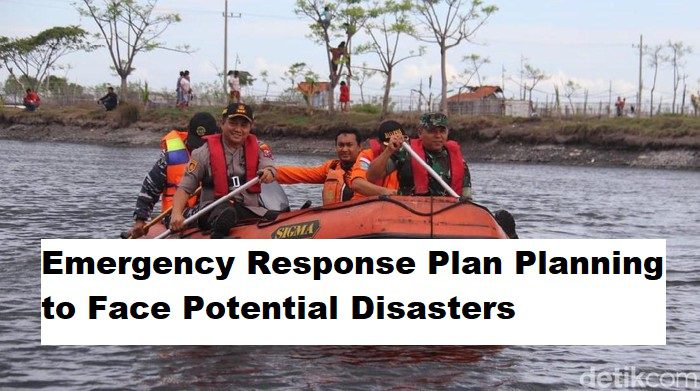Emergency Response Plan Planning to Face Potential Disasters – In this very dynamic world, apart from the challenges of globalization and business competition, industry players and society are also faced with unavoidable potentials, namely the potential for disasters. Disasters in this case include fires, riots, earthquakes, floods, tsunamis, volcanoes, and other things. In Indonesia, which is an archipelagic country, most of the land is located in an active tectonic plate line, which is known as the Ring of Fire. This shows that islands that cross this line, namely the islands of Java, Sumatra, Bali, and Papua are at risk of experiencing a higher frequency of earthquakes due to tectonic shifts, as well as the potential for active volcanoes.
Because natural disasters generally occur suddenly and cannot be avoided, therefore the company management needs to prepare a risk assessment and concrete planning to deal with disasters. For this reason, an emergency response planning management system needs to be carefully prepared by the company as an emergency response to a disaster that occurs.
Emergency Response Plan (ERP) is defined as an Emergency Response Plan, which is a plan document that contains the necessary procedures to be carried out in the event of an emergency. So in the plan, there are instructions and complex solutions regarding all actions and prevention in emergency situations experienced by the company, workers, employees, and the surroundings.
Why is Emergency Response Plan important?
The Emergency Response Plan acts as the first response action that needs to be taken in responding to and dealing with an incident. Some of the processes contained in this ERP are designed to be implemented in the early minutes of an emergency. In making ERP, companies generally carry out a risk assessment followed by determining various possible emergency scenarios, where in every emergency situation they must have a first action / response plan specifically designed to mitigate and minimize risk.
Through a good Emergency Response Plan system, all parties related to the company/employer can experience several benefits, including:
- Raise awareness of the importance of preparedness in dealing with various emergencies
- Facilitate hazard control, evacuation process, and help respond to potential hazards that occur within the company
- Useful for preparing to reduce the various impacts that occur as a result of a disaster
- Able to coordinate what efforts will be made so that it goes well and correctly
- Help reduce the cost of losses from a disaster or emergency in a company
- Assist as input (feedback) on the development of existing ERP systems sistem
Important Aspects in Emergency Response Plan Planning
The Emergency Response Plan (ERP) must be made in such a way as to be able to handle emergencies, especially in the workplace. For this reason, in this article, We will discuss important aspects that need to be considered in making an Emergency Response Plan based on OSHA regulations:
ERP planning must be made in writing, stored in the workplace both hardcopy and softcopy so that it can be accessed by all employees. Companies with less than 10 employees can communicate ERP verbally.
ERP planning should include:
- Procedures for reporting fires or other emergencies
- Procedures for emergency evacuation, including the type of evacuation and the determination of exit routes
using floor plans or workplace maps that clearly indicate emergency exits - Color coded as an exit route guide, in order to assist employees in determining the nearest exit route
- Procedures that must be followed by employees regarding machines or other equipment in the workplace or factory that are important to be turned off before the evacuation process
- Provision of backup power supplies, power plants such as generator sets , availability of water supplies, and other essential services for emergency situations
- Procedures to account for all business processes and employee safety after the evacuation process
- Procedures to be followed by rescue workers as well as medical personnel
- Ensure the availability of information regarding the name or position of the PIC that can be contacted by employees who need more information about ERP to find out the tasks / actions required
- Maintenance of the alarm system as the main notification device for employees in emergency situations
- Provision of training and appointment of PICs to help the evacuation process run smoothly, safely and in an orderly manner
- Ensure a sufficient number of employees to act as evacuation assistants in times of emergency
- One evacuation assistant employee for every 20 other employees is considered sufficient
- The company/employer is responsible for adequate employee involvement and knowledge regarding the evacuation process, which includes knowledge of facility layout, exit routes, nearest shelter (both indoor and outdoor), and awareness of employees who may be in need of additional assistance
- Regularly review and update ERP, especially for facilities that are undergoing renovations or other changes to building structures
In planning the making of an Emergency Response Plan, the company / employer can also discuss or consult with ERP experts, as well as with the related building management to ensure procedures for disaster scenarios, both in terms of actions, availability of safety tools and equipment , emergency exit routes, and others. This aims to provide the maximum possible convenience and security for all workers, as well as carry out a risk assessment to minimize other impacts that may arise.


